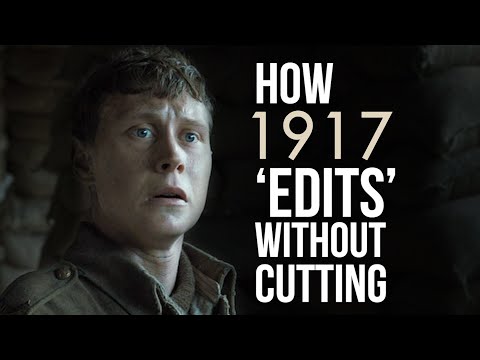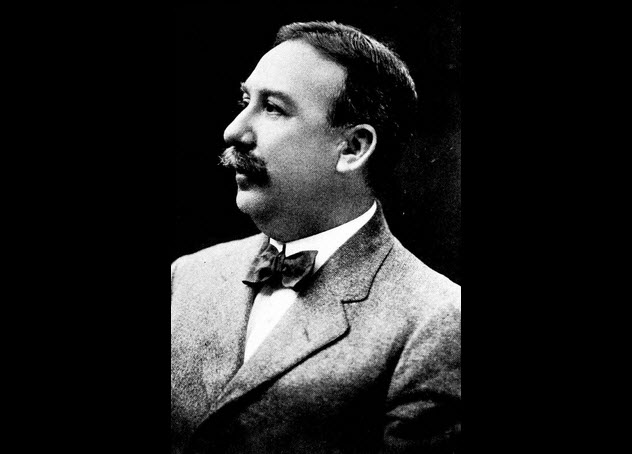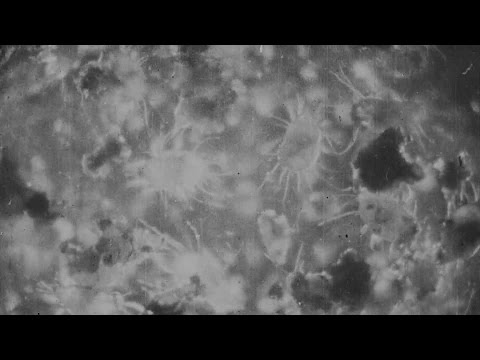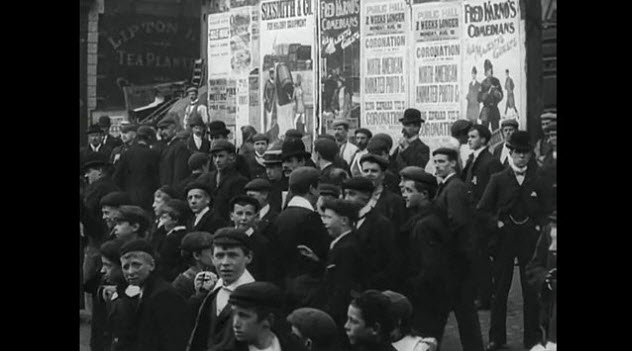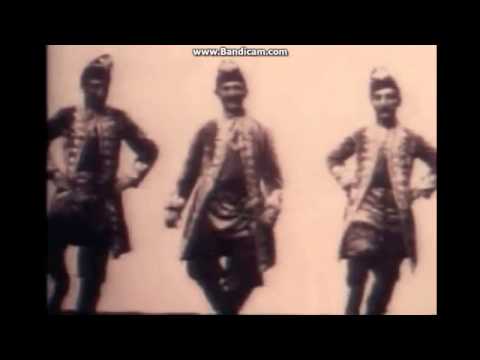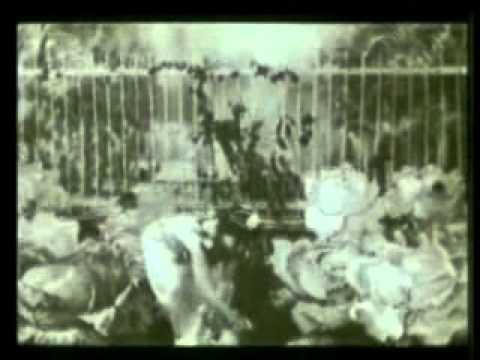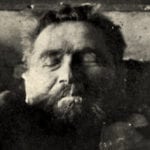But for all their hard work, these men were building on the work of even earlier pioneers, including dozens of virtually unknown filmmakers who did as much for cinema as any of those listed above. Here are 10 of those pioneers and their innovative contributions to filmmaking.
10George A. SmithEditing
Film is a visual language. But instead of using nouns and verbs, the language of film consists of shots, such as “close-ups” and “points of view” (usually abbreviated “POV”). While we don’t know who first combined nouns and verbs to make sentences, we know exactly who created the language of film: two guys from Brighton with awesome mustaches. With partner James Williamson, George Albert Smith pioneered most of film’s basic vocabulary. For example, Grandma’s Reading Glass in 1900 contains the first POV close-up ever recorded. While others, such as Thomas Edison, had already filmed people at close range, Smith and Williamson were the first people to realize that you could place this type of shot next to a wider one and create a narrative from it. In fact, Smith made a career of combining shots to create a continuing story. In 1899, he edited three shots to show a train leaving a station as well as the action inside a carriage. It was the first time that the world had seen continuity editing. In 1901, James Williamson borrowed the technique to make Fire!, a film that dynamically jumped between different points in time in an era when most pictures were just two guys standing on a fake-looking set. In 1901, Williamson’s The Big Swallow (shown above) was even crazier. Breaking the fourth wall, this comedy shows a talkative man accidentally swallowing the guy filming him. It smashed cinematic conventions before there were any to smash. Yet this wasn’t even the duo’s greatest achievement. In 1903, Smith came within a gnat’s whisker of going down in history as the guy who invented color film.
9Edwin S. Porter3-D Films
Edwin S. Porter is one of cinema’s greatest rip-off merchants. His 1903 film The Life of an American Fireman is often hailed as the first movie to use crosscutting, despite being a nearly identical copy of Williamson’s earlier Fire! Yet there is one technical revolution that Porter can claim as his own. He’s the man who invented 3-D films. Most impressively, he did so in 1915. On the morning of June 10, Porter screened some test footage for a private audience using his new stereoscopic technique. Alongside passages from an upcoming film, he displayed 3-D pictures of Niagara Falls, images of the American countryside, and a shot of some people walking up a road. The audience went wild over it. Critics present in the audience called it the dawn of a new level of realism in cinema. Those watching were moved to tears by the beauty of these hyperrealistic shots. It was the beginning of a film revolution. At least, it should’ve been. Instead, 3-D flatly refused to take off. Even now, 100 years later, it’s still suffering declining sales. Porter never capitalized on his invention, although it has earned him a place in the Guinness Book of World Records.
8Francis Martin DuncanNature Documentaries
A dull sequence of a man eating his lunch while reading the newspaper cuts to a long, grainy shot of tiny, crab-like insects crawling around in some old Stilton cheese. That’s the premise of the 1903 film Cheese Mites (shown above), the first nature documentary ever made. This unintentionally groundbreaking film was commissioned by Charles Urban and made by his new employee, Francis Martin Duncan. Urban was the world’s first superstar producer. A kind of Harvey Weinstein from the dawn of cinema, Urban worked with everyone from the Lumiere brothers to Georges Melies to George A. Smith and James Williamson. Urban was producing scientific pictures to order when he hired Duncan, who was using still photography with a microscope to produce film. Urban put Duncan to work filming any tiny creature they could get their hands on. Then Urban marketed the films to the public as using the “Urban-Duncan Micro-Bioscope.” The results were phenomenal. As part of a series called Unseen World, Cheese Mites was shown back-to-back with images of bees, toads, and Canadian pondweed. Taken together, they stunned audiences of the time. In part because of this enthusiastic response, others began developing more complex nature films, culminating in the lavish BBC productions we see today. Incidentally, there’s a possibly apocryphal tale that Cheese Mites was the first film to be banned in the UK. Cheese manufacturers allegedly thought it would frighten the public and lobbied the government to censor it.
7Oscar MicheauxAfrican-American Cinema
The period immediately after 1915 wasn’t a great time to be black in America. D.W. Griffith’s Ku Klux Klan–worshiping film, Birth of a Nation, had just sparked a sudden revival of the real Klan. Race relations were at a nadir and being an African-American entertainer meant sharing a stage with white guys in blackface. Into this grim setup stepped author Oscar Micheaux. Micheaux was an intellectual who wanted to show the moviegoing public what it really meant to be black in America. Although others had already made short movies about the black experience, Micheaux had even bigger plans. He wanted to make the first black movie to be shown in a whites-only theater. Incredibly, that’s exactly what he did. Faced with a barrage of financial, legal, and technical challenges, Micheaux improvised his low-budget features quickly and then personally took them to different cities to arrange showings. Thanks to his energetic personality, he managed to win financial backers, get his films screened in Europe, and even get some showings in “white” theaters. At that time, it was an incredible achievement—one that becomes even more unbelievable when you realize that he did this while making 44 separate movies.
6Eugene Pirou And Albert KirchnerThe First Pornographic Film
Take any great human invention and you can be sure that someone has used it to make porn. Right now, it’s happening with virtual reality and artificial intelligence. About 120 years ago, it was happening with cinema. For that, you can thank Eugene Pirou and Albert Kirchner. A couple of friends who may have met in the risque postcard business, Pirou and Kirchner were the first people to realize cinema’s erotic potential. Less than one year after the Lumiere brothers had dazzled audiences with footage of a train pulling into a station, Pirou and Kirchner were publicly displaying Le Coucher de la Mariee (shown above). Featuring actress Louise Willy, then hot off a saucy stage play, Le Coucher de la Mariee was three minutes of nothing but a sensuous striptease. The film was a sensation. Pirou made enough money to instantly buy up three more venues for screenings and was so successful that he convinced the legendary Georges Melies to start making striptease films. The subsequent wave of erotic pictures was known in France as scenes grivoises d’un caractere piquant and everywhere else as pornography. When Pirou took his footage to England, there was a public outcry. Even stranger, though, was the fate of Kirchner. As a direct result of his successful foray into pornography, he wound up directing Christian propaganda films for the Catholic Church.
5William DicksonThe First Sound Film
If you ask any movie fan to name the first sound film, they’ll probably tell you it was 1927’s The Jazz Singer. While The Jazz Singer was certainly the first widely distributed feature to use sound, it wasn’t the first time someone had made a movie with an audio track. That honor went to William Dickson. Over 30 years before The Jazz Singer made motion picture history, he’d made the Dickson Experimental Sound Film (shown above). At the time, Dickson was working for Edison. (More accurately, Dickson was having his inventions stolen by Edison, who then claimed all the credit.) Not long after inventing the first American movie camera, Dickson tried to synchronize sound with his silent recordings. Taking a violin, he stood in front of a comically large recording device and filmed himself playing a short ditty. The result was the earliest sound in film history. At least, it almost was. Unlike The Jazz Singer, which managed to link sound to the film itself, Dickson merely recorded his playing onto a separate wax cylinder. At that point, he seemingly gave up on the project, and his attempts were consigned to history. It wasn’t until 1998 that the Library of Congress managed to piece the sound and image together for the first time. However, there might be a twist in this tale. In later life, Dickson insisted that he’d made a synchronized film and phonograph recording as early as 1889. So the first sound film may still be out there somewhere, waiting to be recovered.
4Jean PainleveUnderwater Photography
Jean Painleve had the sort of life that could fill 100 lists. A French scientist-educator-filmmaker-inventor, he once managed to escape the Nazis by swimming underwater to Spain using homemade scuba gear. But it was in cinema that his talents really shone. Deeply interested in both marine life and filmmaking, he combined his two passions, inventing a number of groundbreaking techniques in the process. Thanks to Painleve, both underwater photography and science films made insane amounts of progress during his lifetime. When he first screened his science film The Stickleback’s Egg: From Fertilization to Hatching in 1928, French intellectuals claimed it was impossible to educate people using cinema. He soon proved them wrong. Likewise, in the early 1930s, there were no reliable techniques for filming deep-sea creatures. Painleve was the first to find consistent methods for filming the wonders of the ocean. Once he found them, he started filming everything from sea horses (shown above) to octopuses. Painleve was also one of the first filmmakers to make “political” nature documentaries. In the same way that March of the Penguins was allegedly edited to promote monogamy and traditional Christian values, Painleve often deliberately chose to make films about bisexual or hermaphrodite animals to promote alternative lifestyles. Unsurprisingly, this made him extremely unpopular with the invading Nazis.
3Sagar Mitchell And James KenyonBritish Documentary
With their focus on working-class lives, British documentaries have a distinct identity from their American cousins. Men like Humphrey Jennings and Lindsay Anderson spent the 1930s and ’40s making class-conscious, often political films that still influence the style of documentaries in the UK today. But they weren’t the first people to think of showing ordinary lives on-screen. As early as 1900, Sagar Mitchell and James Kenyon were doing it for a living. A cross between showmen and filmmakers, Mitchell and Kenyon’s business model was simple. They took their camera and projection gear to a busy town and set it up in a public place. Then they’d film as many people as humanly possible before plastering the town with flyers that invited people to see themselves on-screen. That evening, interested locals would flock to their projection booth, and the two would make a killing. The setup wasn’t entirely unique. Such “factory-gate films” had been around since 1895, and Cecil Hepworth was doing the same thing in the southern UK. But Mitchell and Kenyon’s focus on ordinary, northern communities was pure British documentary making. They paved the way for the 1930s documentary boom that still influences UK filmmaking while providing future generations with evidence of a fabulous, long-lost world.
2The Skladanowsky BrothersThe First Commercial Film
In a kinder universe, the Skladanowsky brothers would be famous. The Ringo Starr of early cinema, they were important innovators forced to live in the shadow of geniuses like Edison and the Lumiere brothers (Victorian film’s Lennon and McCartney). Yet the Skladanowsky brothers do have one unique claim to fame. They were the first people in history to screen a movie to a paying audience. In 1895, the two German brothers were making money giving “magic lantern” shows in Berlin. At some point, they apparently decided to create moving images because they soon started work on their Bioskop (“Bioscope”). A makeshift camera/projector, it was still capable of showing films at a sufficiently high quality for the brothers to arrange a public screening. On November 1, 1895, they showed a series of nine six-second films to a paying audience in a Berlin theater. One of those films, The Boxing Kangaroo, is shown above. Those of you with an interest in early film have probably noticed that November 1 was several weeks before the Lumiere brothers’ more famous screening. But as the Lumieres had already arranged several private screenings throughout the year, they went down as the inventors of cinema instead of the Skladanowskys. The Lumieres’ system was also much better, which caused theaters that had booked the Skladanowskys to immediately cancel them in favor of the French siblings. The Lumieres went on to become world famous while the Skladanowskys vanished into history.
1Alice Guy-BlacheThe First Fiction Film
Alice Guy-Blache lived a life of awe-inspiring firsts. She was the first female director in history, the first woman to run a major studio, the first director to make a feature-length biblical epic, and the first person to direct a completely African-American cast in a feature film. Yet even these weighty achievements pale beside her greatest accomplishment: Guy-Blache was the first person to make a fiction film. In 1896, the world was still reeling from the Lumieres’ first screening. Companies across Europe and the US were racing to release their own movie cameras, resulting in a glut of competition. At the time, films were exclusively “actualities”—scenes from everyday life, such as trains coming into a station. When Guy-Blache’s boss, Leon Gaumont, sent her out to demonstrate the possibilities of his company’s new camera, he probably expected her to return with something similar. Instead, Guy-Blache did something unprecedented. Setting up her camera in a cabbage patch, the young director filmed a woman “magically” plucking naked babies from the vegetables. Although The Cabbage Patch Fairy (shown above) doesn’t look particularly special to modern eyes (and actually kind of weird), it marked a huge step in the development of cinema. According to the Encyclopedia Britannica, Guy-Blache’s whimsical short likely predated the fantasy fictions of Georges Melies by a good three years. In short, every great fiction film you’ve ever watched—from Inception to The Godfather—can be traced back to this one moment. Not bad for a director most of us had never heard of.
